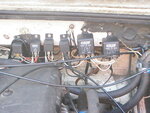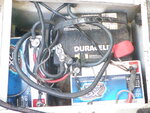I have researched this till it all ran together. I have learned that:
National Luna is troublesome and people regret installing it
People are frustrated with IBS systems
Lots of happy people who built the $50 system posted here:
http://forum.expeditionportal.com/t...-dual-battery-setup-for-50?highlight=isolator
Blue Sea Systems sounds like the new up and coming system
I'm curious what systems you are running and if you are happy?
I am currently running in my Defender 110 2 separate systems. One battery is 100% dedicated to a 100 amp alternator and the other (home) battery is attached to a 100 watt solar panel. The home battery runs an ARB fridge, a few LED lights and intermittently a 400 watt inverter to charge my camera gear and electric toothbrush.
National Luna is troublesome and people regret installing it
People are frustrated with IBS systems
Lots of happy people who built the $50 system posted here:
http://forum.expeditionportal.com/t...-dual-battery-setup-for-50?highlight=isolator
Blue Sea Systems sounds like the new up and coming system
I'm curious what systems you are running and if you are happy?
I am currently running in my Defender 110 2 separate systems. One battery is 100% dedicated to a 100 amp alternator and the other (home) battery is attached to a 100 watt solar panel. The home battery runs an ARB fridge, a few LED lights and intermittently a 400 watt inverter to charge my camera gear and electric toothbrush.
Last edited:

